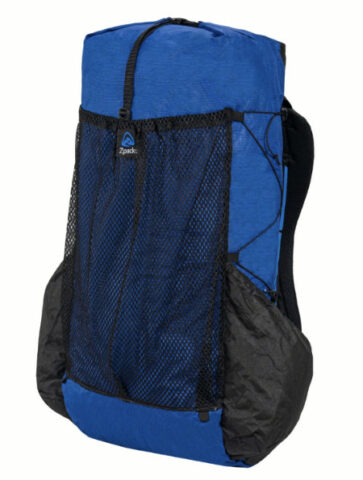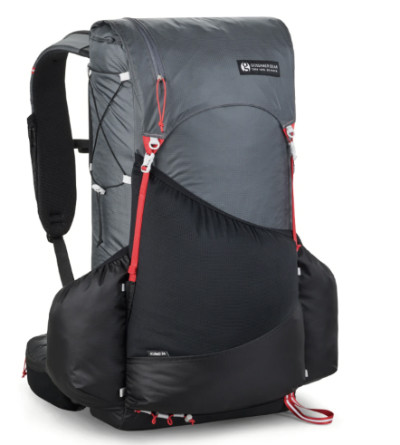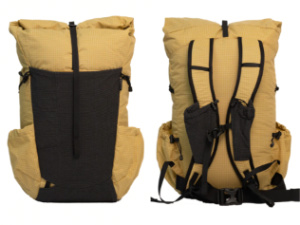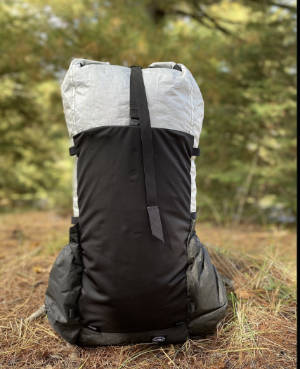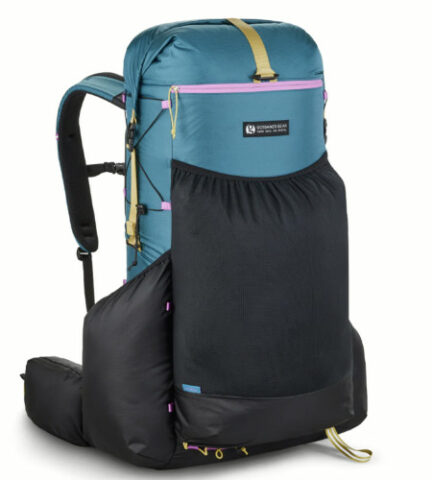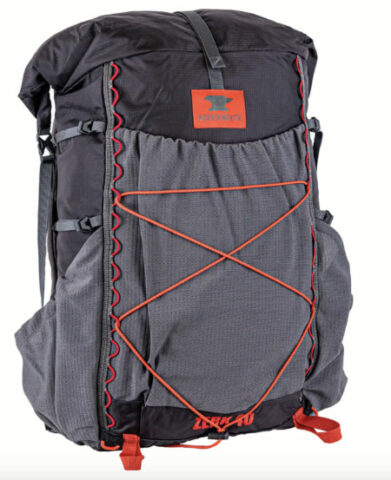As ultralight backpacking gear has gotten lighter weight, so have ultralight backpacks. So much so, that many thru-hikers, section-hikers, and long-distance backpackers are turning to frameless ultralight backpacks for their adventures. Designed for loads of 20-25 pounds or less (including food, water, and fuel), these backpacks and their manufacturers have proven to be wildly innovative in their use of cutting-edge materials, colors, and features. While backpacking this light isn’t for everyone, the increased availability of ultralight backpacking gear and access to know-how through social media has made it more achievable than ever.
If your aim is to reduce the weight of your backpack to close to a pound or less, here are some ways of achieving that goal.
- Use a frameless backpack, since you don’t need the added support or weight of a frame or even a hip belt for loads under 20-25 pounds.
- Reduce the volume of your pack to 40L or less. which forces you to use lighter-weight and more compact gear.
- Pick backpacks made with ultralight fabrics like Dyneema DCF, Ultra, or EcoPak which are waterproof and highly durable.
Here are the 10 frameless ultralight backpacks that we recommend that embody these qualities.
Be sure to read our Frameless Ultralight Backpack Selection Guide below which explains these tradeoffs in greater detail.
1. Zpacks Nero Ultra (38L)
2. Gossamer Gear Kumo (36L)
3. Nashville Packs Cutaway (42L)
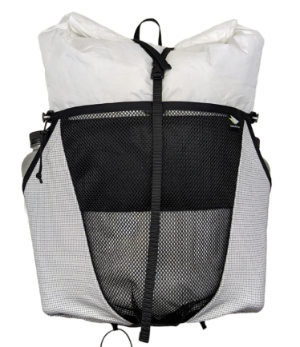
4. Pa’lante Packs V2 (31-37L)
5. Osprey Talon Velocity (30L)
6. Superior Wilderness Designs Ultralight Superior (40L)
7. Mountain Laurel Designs Burn (38L)
8. Gossamer Gear G4-20 (42L)
9. Mountainsmith Zerk (40L)
10. ULA Equipment – CDT (54L)
Frameless Ultralight Backpack Selection Guide

Custom vs. Off-the-Shelf Backpacks
Many frameless ultralight backpacks are made by hand by cottage manufacturers and can be customized in terms of colors, fabric, or features. Some of the more established backpack manufacturers or retailers listed above only offer “stock” backpacks with a fixed set of features. The advantage of purchasing a stock backpack is that it’s usually available immediately without a long wait time. If you decided to go the custom route, be sure to contact the manufacturer if you have any questions before you order. Most custom backpacks are non-returnable.
Frameless Ultralight Backpack Volume
How much volume do you need in an ultralight backpack, when you’re trying to get your TOTAL pack weight below 20 pounds? It’s hard to make a blanket recommendation because it ultimately comes down to the climate you plan to hike in and what your clothing, sleep insulation, shelter, nutrition, and water needs will be. For general three-season conditions, most UL backpackers find that a 40L pack provides more than enough volume for a 3-5 day trip, including gear, food, fuel, and water. It gets much more difficult to fit everything you need into a 30L backpack, however, unless you can resupply more frequently, you go stoveless, or you don’t need to carry much water. However, given the list of packs above, there’s not a huge weight penalty for carrying a higher volume pack than you need, since they’re all so lightweight and you can compress them using a roll-top closure or side compression.
Massive External Storage
Frameless ultralight backpacks tend to have a lot of external storage which is accessible while you’re still wearing the backpack. This is as much a mantra as a design philosophy with the underlying goal of hiking as many miles as possible (like all day) without ever having to stop and take your backpack off. Many frameless ultralight packs come with pockets sewn onto their shoulder straps, bottom stretch pockets so you can reach underneath a pack when worn to pull out snacks or deposit used wrappers, and accessible side pockets.
Ultralight Backpack Fabrics
Most ultralight backpacks are made with Dyneema Composite Fabrics (DCF), XPac, Nylon (Robic, Cordura, Dyneema X, etc.) In terms of durability, Ultra is usually the most durable in terms of abrasion resistance, then EcoPak, XPac and LiteSkin, then DCF, and finally Nylon, although it depends on the denier or weight of the material used. DCF and XPac revolutionized UL backpack manufacturing because they’re so lightweight, but are being quickly overtaken by newer waterproof fabrics like EcoPak and Ultra which are even more robust and ecologically sustainable products.
The biggest areas of wear and tear on a backpack is the base, where you put it down on the ground, and the side pockets, especially if they’re made with mesh. Most UL pack makers have switched to more durable mesh, use more durable stretch mesh that has finer holes and is less prone to snagging, or have switched to making external pockets with solid fabrics for better durability.
DCF, XPac, ECOPAK, Ultra, and LiteSkin are all waterproof materials so they won’t absorb water when it rains. DCF has the advantage that it can be seam-taped which greatly increases the waterproofing of a backpack. While XPac, ECOPAK, and Liteskin can be seam-sealed, most people don’t bother and line their packs with trash compactor bags or use waterproof stuff sacks. Very little water will get in anyway. It’s much the same with Robic Nylon and other high-tenacity nylons although they will soak thru, can make your gear wet, and take a while to dry out. See the following FAQs for more advice and reader discussion:
Hip Belts on Frameless Backpacks
The hip belts found on frameless backpacks are not load-bearing because there’s no frame to transfer to load to the hips. This explains why many ultralight packs don’t have them, they’re removable, or stowable, and only made with webbing if they’re included at all. Their only real purpose is to provide an anchorage for hip belt pockets or to prevent the pack from bouncing against your torso if you walk fast.
Since the hip belts are not load-bearing, all the weight will rest on your shoulders. When choosing packs, you should consider how much shoulder strap padding you prefer and the strap width that you find most comfortable.
Shoulder Straps
An increasing number of frameless pack makers are including S-shaped backpack straps on their packs, which are more comfortable for women because they accommodate breasts more comfortably. Many men also find them more comfortable than the J-shaped shoulder straps that were used previously.
There’s also an increasing use of vest-style shoulder straps on many backpacks which can take some getting used to if you were born and bred on more conventional shoulder straps. The added width and pocket storage on vest-style packs makes them an attractive feature and can help distribute the load across your shoulders, especially if your pack lacks a hip belt.
Torso Length
Shorter torso lengths are also increasingly available to accommodate women, who on average, aren’t as tall as men. However, matching your exact torso length is less critical on a frameless backpack because the hip belt is not load-bearing. The fitting process is actually more similar to fitting a daypack (without a hip belt) than a regular framed backpack, although matching your torso length is still a good benchmark to aim for.
Check Out All of SectionHiker’s Gear Guides!
SectionHiker is reader-supported. We only make money if you purchase a product through our affiliate links. Help us continue to test and write unsponsored and independent gear reviews, beginner FAQs, and free hiking guides.

